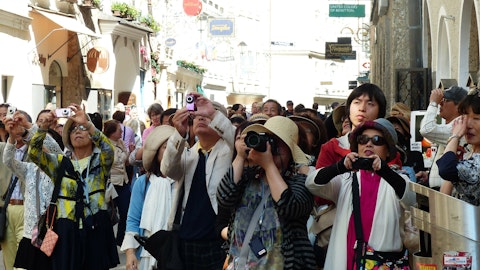Non-fungible token (NFT) is not exactly a buzzword in the art industry, but the NFT art market has grown respectably in recent years. In 2022, it was valued at $20.44 billion, and experts believe it will expand annually by 34.2 percent toward 2030. They also attribute this development to the increasing demand for digital art, but regardless, the digital revolution occurring in this burgeoning segment could not be ignored.
As digital assets representing ownership or proof of authenticity of unique items, NFTs rely on blockchain technology. While they have found applications in various domains, including gaming and collectibles, their impact on the art market is nothing short of transformative.
In this article, we will dig into the phenomenon of NFT trading and its profound influence on the traditional art market, including its implications for artists, collectors, and the broader art ecosystem. We will also look into the opportunities and challenges that await players in this emerging market.

A vibrant mural composed of miniature figurines and NFTs.
Understanding NFTs
NFTs are unique cryptographic tokens serving as testaments to ownership and authenticity. They cater to digital creations like art, music, videos, and even virtual real estate.
Unlike Bitcoin and Ethereum, the two top cryptocurrencies in the world according to CoinMarketCap, NFTs are inherently distinct. They cannot be interchanged on a one-to-one basis due to their individuality.
NFTs possess several defining characteristics that set them apart from traditional forms of digital or physical ownership. Their hallmark feature is their unrivaled uniqueness, a quality meticulously safeguarded by blockchain technology. Each NFT stands as a singular, irreplaceable entity, offering a profound sense of individuality that resonates deeply with collectors and creators alike.
Furthermore, NFTs bring transparency and immutability to the forefront of ownership records, providing an invaluable tool in combating issues related to forgery and plagiarism within the art world. This meticulous documentation of ownership and provenance ensures the integrity of digital creations.
Additionally, these tokens have proven to be highly interoperable, effortlessly traversing various platforms and marketplaces. This seamless movement benefits artists by expanding their reach to a broader audience and provides potential collectors with enhanced liquidity, as the tokens can be easily traded.
Incorporating smart contracts is another ingenious aspect of NFTs. These contracts are often embedded within the tokens, enabling automated royalty payments for artists. This ensures creators receive a portion of future sales, fostering a sustainable ecosystem for digital artists.
How NFTs are created and verified
Creating and verifying NFTs involves a combination of blockchain technology and cryptographic processes. To create an NFT, an artist or content creator typically follows these steps:
Platform selection
The creator selects an NFT marketplace or platform to mint their token. Popular platforms include Ethereum-based options like OpenSea, Rarible, or newer blockchain networks specifically designed for NFTs.
Digital content preparation
The creator prepares the digital asset they want to tokenize, whether it’s artwork, music, videos, or any other digital file.
Minting
The creator uses the chosen platform to “mint” their NFT. It involves uploading the digital file to the blockchain, which generates a unique token associated with that file. This process often incurs a small fee.
Addition of metadata
The creator adds metadata to the NFT, which includes information about the asset, such as title, description, and any additional attributes. This metadata provides context to potential buyers.
Ownership confirmation
Once minted, the NFT’s ownership is confirmed through blockchain verification. The blockchain ledger records the creator’s ownership of the NFT.
The Role of Blockchain Technology in NFTs
Blockchains are crucial to the creation, validation, and functionality of NFTs. At its core, a blockchain is a decentralized, immutable record of transactions across a network of computers. Here’s how blockchain technology is integral to NFTs:
Security and immutability
Blockchains provide a secure and tamper-proof environment. NFT data, including ownership and transaction history, is stored in a transparent and unchangeable manner. This ensures the authenticity and provenance of NFTs, reducing the risk of fraud and forgery.
Ownership verification
Blockchain verifies the ownership of NFTs. When an NFT is created or transferred, the blockchain records these actions, allowing anyone to confirm the current and past ownership of a specific NFT. This is crucial in establishing the legitimacy of digital assets.
Smart contracts
Smart contracts, self-executing agreements with predefined rules, are often embedded within NFTs. These contracts automate processes like royalty payments to creators each time the NFT is resold. Blockchain ensures these contracts are executed transparently and without intermediaries.
Interoperability
NFTs can be created and traded across different blockchain networks, allowing for greater flexibility and accessibility for both creators and collectors.
There are over than 1,000 types of blockchains in the world today. In essence, this technology underpins the trust, security, and functionality of NFTs, enabling the growth of this transformative digital asset market.
The Traditional Art Market

A black and chrome motorcycle in a desert landscape, capturing the essence of freedom.
The traditional art market is a centuries-old ecosystem where physical artworks, ranging from paintings and sculptures to antiques, are bought and sold through galleries, auctions, and private dealers. It is characterized by established art institutions, renowned auction houses, and a complex network of intermediaries.
The value of art in this market often depends on factors such as historical significance, provenance, artist reputation, and aesthetic appeal. However, the traditional art market, while prestigious, faces several challenges and limitations. One significant concern is accessibility, as the market can be exclusive, with high barriers to entry for both artists and collectors.
Authenticity and provenance verification can be arduous, leading to concerns about forgeries and disputed ownership. Additionally, the market heavily relies on intermediaries, which can result in high transaction costs and less direct artist-to-collector relationships.
Art’s physical nature raises issues of preservation and storage, adding to its cost and complexity. Furthermore, the market’s dependence on personal connections and geographical proximity can limit opportunities for global artists and buyers. Lastly, the subjectivity of art valuation and the influence of speculators can lead to price volatility, making it challenging for emerging artists and smaller collectors to navigate this complex landscape.
Benefits of NFTs for Artists and Collectors
NFTs offer a host of benefits to both artists and collectors, revolutionizing the art market in the digital age. For artists, NFTs provide a direct and global platform to showcase and sell their work, reducing their reliance on traditional intermediaries like galleries and dealers. NFTs also introduce a recurring revenue stream through royalties on secondary sales, ensuring artists are fairly compensated as their art appreciates in value.
Additionally, NFTs enhance copyright protection, as the blockchain records the original creator, reducing the risk of plagiarism and unauthorized use.
Collectors benefit from NFTs through enhanced provenance and ownership verification. The blockchain’s transparency guarantees the authenticity of their acquisitions. NFTs also offer fractional ownership opportunities, enabling collectors to invest in high-value artworks collectively. Furthermore, NFTs provide liquidity, as digital assets can be easily traded on various online marketplaces.
Overall, NFTs empower artists with new income streams and copyright protection while offering collectors secure ownership rights and investment opportunities, fundamentally reshaping the relationship between creators and art enthusiasts in the digital era.
Criticisms and Controversies Surrounding NFTs
The rise of NFTs in the art industry has garnered significant attention but is not without its share of issues and controversies, such as the following:
Environmental concerns
NFTs, often built on energy-intensive blockchain networks like Ethereum, have faced backlash due to their environmental impact. The energy consumption required for minting and trading NFTs has raised concerns about carbon footprints and sustainability.
Copyright and plagiarism
The NFT space has witnessed instances of copyright infringement and plagiarism. Artists’ works have been tokenized without their consent, leading to legal disputes and ethical concerns regarding the originality of some NFTs.
Speculation and price volatility
The NFT market has seen rapid price fluctuations, with some artworks selling for exorbitant amounts. This has led to accusations of speculative bubbles and concerns that the market may be driven more by investment motives than genuine interest in art.
NFTs and Digital Art: The Unstoppable Transformation
According to Influencer Marketing Hub, about 28.4 thousand art-related NFTs were sold in April 2021. By August of that year, this number peaked at around 117.4 thousand before dropping over the succeeding months and settling at 7.7 thousand In 2023.
The above numbers represent significant changes in the NFT art market and the ongoing evolution in the world of art itself, where artists and collectors navigate previously uncharted territories. Indeed, the future of art and NFTs promises exciting possibilities.
As technology keeps advancing, we can anticipate more innovative uses, increased integration with traditional art markets, and greater recognition of digital artists. While challenges must be addressed, the undeniable potential of NFTs in reshaping how we create, value, and collect art ensures the intersection of art and technology will remain a compelling and transformative narrative for years to come.





